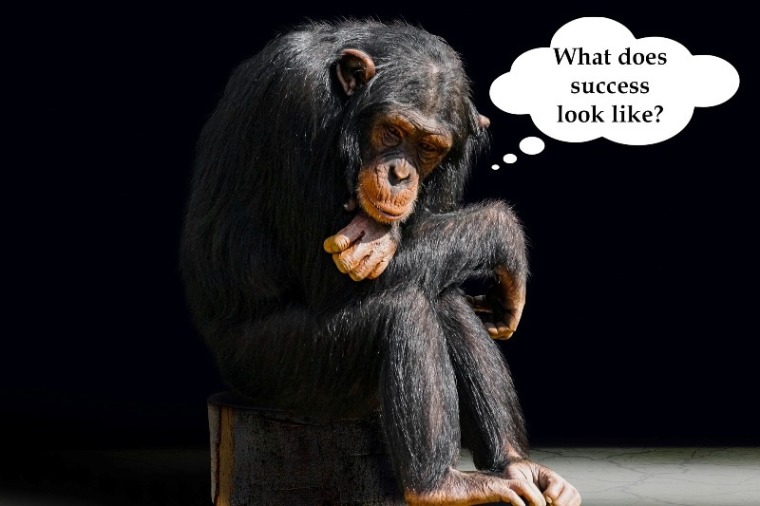
The concept of visualisation evolved out of the self-empowering 1960s, the ability to manifest one's own success through thought alone appealed to the masses in its simplicity.
This theory is supported by countless amounts of research which did not go unnoticed by the sporting world. Mental skills has previously been a vastly untapped area within sports, where predominantly it was focused on cultivating pure grit within an athlete in a bid to push them beyond their normal limits in order to succeed.
This method of grit has however become unraveled over the years as more and more athletes have come forward voicing concerns over their own mental health as a result of mismanaged mentoring.
As the sporting world shifts to acknowledge and support athlete mental wellbeing they have gravitated towards visualisation as a means of providing athletes with a healthy technique that has a potential competitive advantage, if they can harness it.
However, there remains a sense of disconnect for many athletes and aspiring visionaries who have attempted to implement visualisation into their profession and failed to reap the rewards they were assured it would give. Why is this? If it is so simple how are so many getting it wrong?
Perhaps it is because as humans we have a tendency to become so fixated on outcome that success has come to represent the end result, which in terms of sport is making a perfect shot or crossing the finish line first, ultimately winning the event.
Therefore, it is no wonder that the majority of coaches and athletes have misunderstood the practice of visualisation. Believing it to mean mentally picturing the outcome, seeing yourself cross the finish line first or the ball going effortlessly through the hoop.
But as many have discovered this often feels like an elusive technique applied in desperation, resulting in immense frustration when it doesn’t work.
Practice regularly
Part of the reason this form of visualisation does not work is because it is not practiced regularly prior to when it is needed, making it more of a distraction rather than a tool providing focus and calm. More notably this form of visualisation seldom works because it focuses on the wrong part. Instead of concentrating on the outcome athletes need to direct their attention to the process that leads up to their desired outcome.
Practically speaking this requires athletes and coaches to engage in a reflective process during training, examining all the steps that lead to previous winning moments. Using curling as an example; a perfect double run back occurs when the player has taken time to discuss the shot with their team, so they are all on the same page as to the weight that will be thrown and where the stone needs to make contact.
The thrower then takes a few cycles of breath and completes a setup ritual, cleaning their stone ensuring no dirt is underneath it that could impair the shot. They will pay attention to all the physical cues that will let them know their body is aligned to make the shot. Finally, they will allow their muscle memory to override and trust that it knows the weight required and the set up is correct to deliver the stone to the brush.
As the stone leaves their hand the result is out of their control but they have done all they can to ensure it has the best chance of success.
Developing an in-depth awareness of a successful process grounds an athlete in situations of high pressure, breaking down the necessary steps and providing a sense of confidence in their ability to perform. As they work to create a process to visualise, motivation for good choices outside of the event increases as athletes make the connection between practice, nutrition and sleep and how they impact the desired outcome.
Not limited to athletics
Process visualisation is not limited to just athletes, as Christians we often fall into the same trap of outcome focus. Neglecting a consistent prayer life and only attempting to use it when we need or want something. But if we look to the Bible and more specifically to Jesus we are given a beautiful example of a process to visualise, which ground us in a world that is desperately trying to distract us.
Yes, the ultimate goal is heaven and it is good to acknowledge that but until the day comes when you are there, it is important to live out the process that brings us closer to God. Jesus is referenced consistently praying and seeking God, taking rest, resisting temptation, helping those in need and teaching the love of God wherever he went.
Whilst all of these things can feel extremely hard to do and due to our nature we will fail from time to time attempting them but if we break down the process for each thing, then they become more manageable.
For example if you want to pray more consistently in the mornings, what does that process look like? Setting an alarm the night before, going to sleep early enough that you won't just be rambling in the morning, having your Bible and or a journal within easy reach. Small easy to remember steps are key in helping you achieve your desired outcome.

Mhairi-Bronté Duncan plays Curling for New Zealand and uses her experiences as an athlete to inspire her writing.